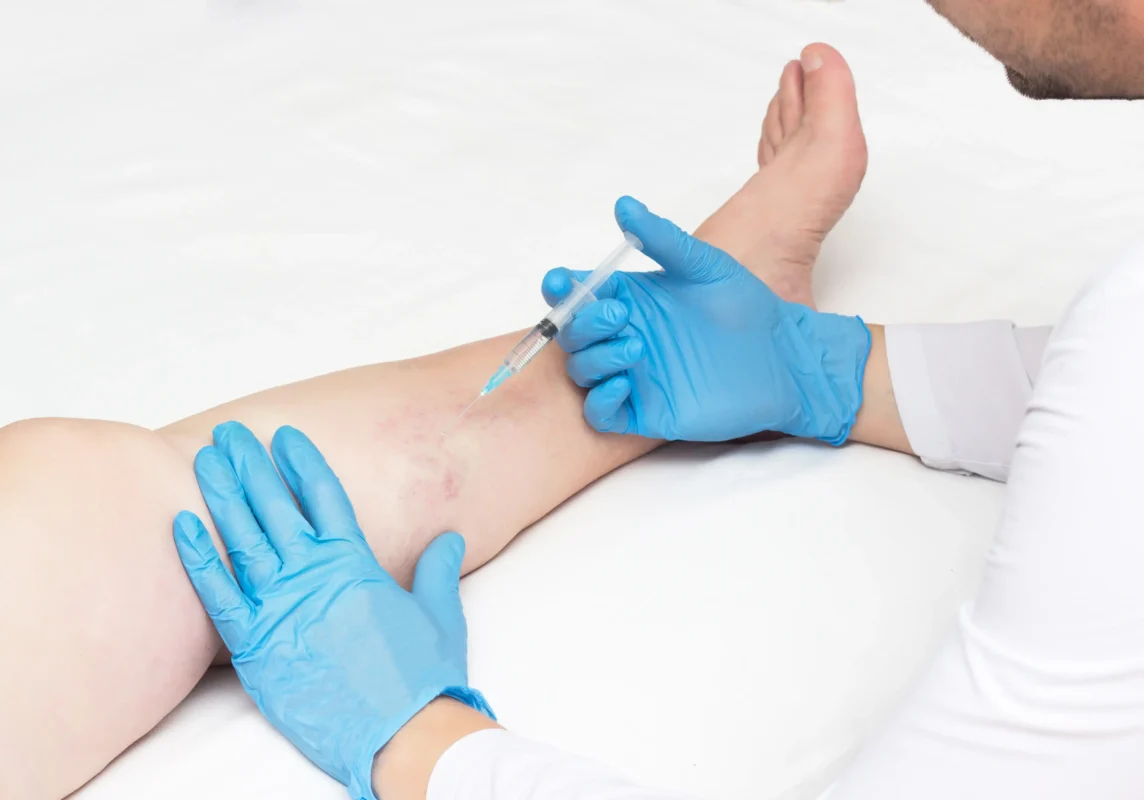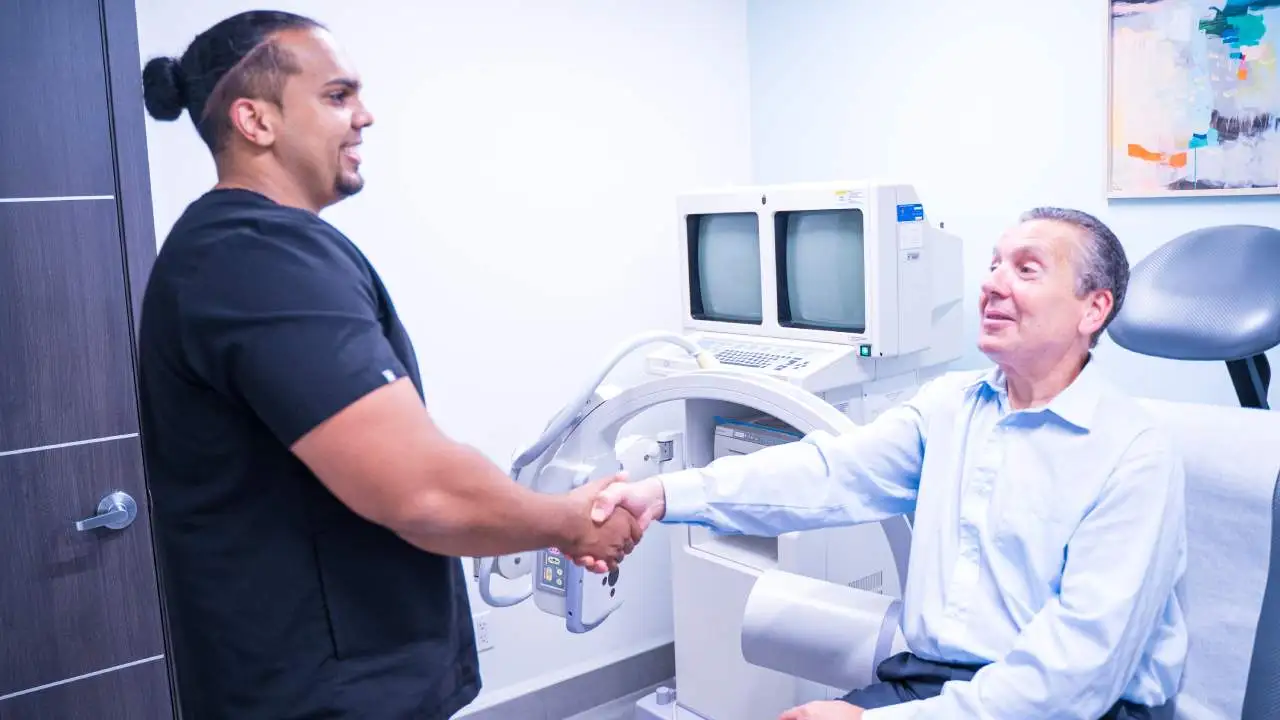At Vein Treatment Clinic, we understand that navigating insurance coverage for vein treatment can be confusing. While varicose veins and other vein issues can cause discomfort and affect your quality of life, understanding how insurance factors into your treatment can alleviate some of the stress. In this guide, we’ll break down the various factors that can impact your insurance coverage for vein treatment, empowering you to make informed decisions about your health.
Before we proceed, it’s important to highlight that vein treatments are usually covered by insurance, especially if they’re deemed medically necessary. Even if you believe your vein issues are purely cosmetic, you may have underlying chronic venous insufficiency, which our vein doctors can identify and document. Identifying the root cause of your spider veins and other vein issues will allow us to maximize your chance of coverage.
At Vein Treatment Clinic, we offer hassle-free insurance verification before your first appointment. Our insurance team will review the terms and conditions of your insurance plan and determine your coverage options. Please schedule an appointment and request hassle-free insurance verification.
1. Medical Necessity
One of the primary factors influencing insurance coverage for vein treatment is medical necessity. Insurance companies typically cover treatments that are deemed medically necessary, meaning they are essential for your health and well-being. When it comes to vein treatments, procedures like endovenous laser therapy (EVLT) or sclerotherapy may be covered if your condition meets specific criteria established by your insurance provider. Factors such as the severity of your symptoms, the presence of complications like ulcers or blood clots, and the failure of conservative treatments may contribute to the determination of medical necessity.
2. Diagnostic Testing
Diagnostic testing plays a crucial role in assessing the severity of your vein condition and determining the most appropriate course of treatment. Insurance coverage for vein treatment may be influenced by the results of diagnostic tests such as duplex ultrasound imaging. This non-invasive test allows vein specialists to evaluate the structure and function of your veins, identifying issues like venous insufficiency or blood clots. Insurance companies may require documentation of these test results to support the medical necessity of vein treatment and approve coverage for procedures.
3. Insurance Provider Policies
Each insurance provider has its own set of policies and guidelines regarding coverage for vein treatment. These policies can vary widely, so please request our team to review your insurance plan documents carefully and understand the specific coverage limitations and requirements. Some insurance companies may have restrictions on the types of vein treatments covered, the number of treatments allowed, or the network of providers from which you can seek treatment. Our insurance team will review your insurance provider’s policies to help you anticipate potential out-of-pocket costs and avoid unexpected expenses.
4. Pre-authorization and Pre-certification
In many cases, insurance companies require pre-authorization or pre-certification for certain medical procedures, including vein treatments. Pre-authorization involves obtaining approval from your insurance provider before undergoing a specific treatment. This typically requires the submission of documentation, such as medical records, diagnostic test results, and a treatment plan, to demonstrate the medical necessity of the treatment. Failure to obtain pre-authorization when required can result in denial of coverage or higher out-of-pocket costs.
5. In-Network vs. Out-of-Network Providers
The choice of healthcare providers can also impact insurance coverage for vein treatment. Many insurance plans distinguish between in-network and out-of-network providers, with different coverage levels and cost-sharing requirements for each. In-network providers have contracted with your insurance company to provide services at negotiated rates, resulting in lower out-of-pocket costs for patients. Out-of-network providers, on the other hand, may not have a contract with your insurance company, leading to higher out-of-pocket expenses.
Before scheduling vein treatment, it’s essential to verify whether your chosen provider is in-network with your insurance plan to maximize coverage and minimize costs. At Vein Treatment Clinic, we accept most insurance plans, including Medicare, and offer hassle-free insurance verification before your appointment. As such, we ensure that you have a clear understanding of your insurance options and out-of-pocket costs before your treatment.
6. Co-payments, Deductibles, and Coinsurance
Understanding your insurance plan’s co-payment, deductible, and coinsurance requirements is critical for estimating your out-of-pocket costs for vein treatment. A co-payment is a fixed amount that you pay for each visit or service, while a deductible is the amount you must pay out of pocket before your insurance coverage kicks in. Coinsurance refers to the percentage of the cost of a covered service that you are responsible for paying after reaching your deductible. These cost-sharing mechanisms can vary depending on your insurance plan and the specific vein treatment received. Our insurance team can clarify any questions you may have.
How Vein Treatment Clinic Helps Optimize Insurance Coverage for Your Vein Treatment
At Vein Treatment Clinic, we understand the importance of optimizing insurance coverage for vein treatment. Our team is dedicated to helping patients navigate the complexities of insurance reimbursement to ensure they receive the care they need without unnecessary financial burden. Here are several ways we work to optimize insurance coverage for your vein treatment:
1. Insurance Verification and Benefit Review
Before scheduling any vein treatment procedures, our knowledgeable staff will verify your insurance coverage and conduct a comprehensive benefit review. We’ll clarify important details such as coverage limitations, co-payments, deductibles, and coinsurance requirements specific to your insurance plan. By understanding your insurance benefits upfront, we can help you anticipate potential out-of-pocket costs and avoid surprises.
2. Prior Authorization Assistance
Many insurance plans require prior authorization for vein treatment to ensure medical necessity. Our team will help you obtain the necessary pre-authorization from your insurance provider by preparing and submitting all required documentation, including medical records, diagnostic test results, and treatment plans. We’ll work diligently to streamline the prior authorization process, minimizing delays and ensuring timely approval for your vein treatment.
3. In-Network Provider Status
As an in-network provider with a wide range of insurance companies, Vein Treatment Clinic is committed to maximizing your insurance coverage for vein treatment. Being in-network allows us to offer services at negotiated rates, resulting in lower out-of-pocket costs for our patients. We’ll verify our in-network status with your insurance plan and provide transparent pricing information to help you make informed decisions about your care.
4. Transparent Pricing and Cost Estimates
We believe in transparency when it comes to pricing for vein treatments. Our team will provide you with detailed cost estimates upfront, including your expected out-of-pocket expenses based on your insurance coverage and benefit structure. We’ll take the time to answer any questions you may have about pricing and help you understand your financial responsibility before proceeding with treatment. We follow a strict no-surprise-billing policy.
5. Billing Advocacy and Resolution
In the event of insurance claim denials or billing disputes, Vein Treatment Clinic is here to advocate on your behalf. Our billing specialists will review denied claims, identify any discrepancies or errors, and pursue appeals as necessary to overturn denials and secure reimbursement for services. We’ll communicate openly with your insurance company and provide the documentation to support the medical necessity of your vein treatment.
6. Thorough Diagnostic Tests
At Vein Treatment Clinic, we prioritize thorough diagnostic testing to accurately assess your vein condition and develop a treatment plan. Comprehensive diagnostic tests, such as duplex ultrasound imaging, allow our vein specialists to evaluate the structure and function of your veins, identifying underlying issues such as venous insufficiency or blood clots. By thoroughly documenting your condition through diagnostic testing, we provide compelling evidence of medical necessity to support insurance coverage for vein treatment procedures.
Contact VTC & Request Hassle-free Insurance Verification
At Vein Treatment Clinic, we are committed to helping our patients understand their insurance benefits and maximize coverage for vein treatment. If you have any questions about insurance coverage for vein treatment or would like to schedule a consultation, please don’t hesitate to contact us. We’re here to help you every step of the way.











